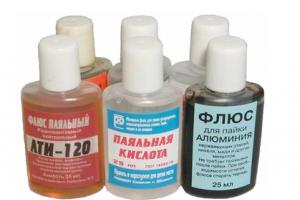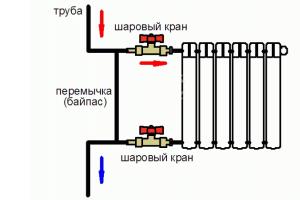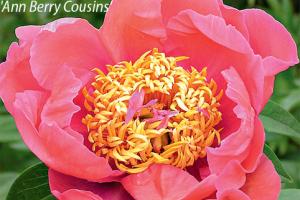The main cause of laryngeal candidiasis is a fungus of the genus Candida.
It is found in the tissues of about 80% of the planet's population and is part of the opportunistic microflora.
In people with strong immunity, the microorganism does not cause any problems and does not manifest its presence in any way.
When the body's defenses are reduced and the body's metabolism is disrupted, the pathogen is activated and begins to multiply, releasing enzymes that damage the nasopharyngeal mucosa.
The main factors that increase the risk of developing infection:
- Hormonal imbalance, including during pregnancy, as well as the use of oral contraceptives and steroids.
- Dysbacteriosis caused by antibiotic therapy.
- Staying in contact with a patient with pharyngomycosis, sharing cutlery with such a person, violating hygiene requirements.
- Decreased immunity associated with the use of drugs (chemotherapeutic agents, immunosuppressants), HIV, viral hepatitis.
- Hypovitaminosis and vitamin deficiency.
- Some diseases, including decreased production of thyroid hormones, diabetes, gastritis.
- Newborn period or old age.
- Constantly being under stress.
- Poor nutrition, replacement of nutrients with simple carbohydrates, and some other diet violations.
- Incorrect use of an antifungal drug (insufficient dosage or duration of treatment).
- Asthenia, chronic fatigue of the body.
The severity of symptoms of laryngeal candidiasis depends on how weakened the body is. Inflammation of fungal etiology is usually manifested by the following symptoms: redness, swelling and dryness of the mucous membrane of the pharynx, pain, burning, itching, soreness, increased sensitivity in the oral cavity, in some patients hyperthermia, anorexia. Eating sour, spicy and hot foods increases symptoms that cause discomfort in the mouth.
In the absence of appropriate treatment, an increase in the intensity of the manifestations of the disease is observed; a cheesy white coating or white inclusions appear on the tonsils, posterior surface of the pharynx, palatine arches, and soft palate on a hyperemic background.
Subsequently, white plaques and films are formed, merging with each other. In young children, a high temperature is sometimes recorded, purulent processes and yellow plaque appear in the throat, when removed, erosions and bleeding occur.
You can become infected with candidiasis of the larynx from a sick person through kissing, unwashed hands, or common household items (toothbrush, spoon, cup, etc.). Thrush can be transmitted from a sick mother to her fetus or newborn during pregnancy and childbirth.
A possible medical route of transmission is through poorly treated reusable spatulas or the hands of personnel. Often, pathology develops against the background of drug therapy, which reduces the body's defenses, disrupts the balance of natural microflora, and disrupts metabolism.
The diagnosis of laryngeal candidiasis can often be made based on examination, taking into account clinical signs. If necessary, a bacteriological examination of a smear taken from the affected area of the respiratory organ and a general blood test are carried out.
Candidiasis of the pharynx: manifestation and treatment of thrush on the tonsils and pharynx
 Candidiasis or pharyngeal thrush on the tonsils used to be a purely pediatric problem; recently, more and more adult patients, regardless of gender, are faced with this disease.
Candidiasis or pharyngeal thrush on the tonsils used to be a purely pediatric problem; recently, more and more adult patients, regardless of gender, are faced with this disease.
At a normal level of the body's defenses, the fungus simply lives on the mucous membrane.
Under appropriate conditions, it causes inflammation not only of the pharynx, but also of the esophagus.
This phenomenon is associated with the increasing popularity of oral sex, as well as the uncontrolled use of antibiotics.
In 20% of children under one year of age, clinical manifestations of thrush in the oral cavity and pharynx are observed, and 5% suffer from a congenital form of the disease. Acquired thrush develops as a result of infection of the child during childbirth, from medical personnel in the hospital or already at home from the mother, or through household items.
After entering the oral cavity due to the immaturity of the immune system and unformed natural microflora, Candida actively multiplies and causes acute stomatitis. First, there is redness, then plaque and erosion on the tongue and the inner surface of the cheek.
Effective treatment of pharyngeal candidiasis requires an integrated approach., which includes the local use of antiseptics and antifungals, taking oral tablets that destroy fungal infections, and taking vitamins and probiotics. Compliance with the dosage and duration of therapy is mandatory, as well as treatment of persons who are in close contact.
To treat the oral cavity and tonsils for pharyngeal candidiasis, use solutions of brilliant green, borax, sodium bicarbonate, methylene blue or potassium permanganate. A good effect is achieved by using iodine preparations (Lugol, Yoddicerin), as well as propolis-based drugs (Weeding, Propasol).
For severe forms of fungal infection, oral fungicides Nystatin, Levarol, Fluconazole are prescribed. If recovery does not occur, then they resort to stronger antimycotic drugs: Ketoconazole, Intraconazole, etc. To accelerate the restoration of normal microflora and increase immunity, probiotics (Bifiform, Baktovit) and multivitamin complexes are recommended.
To defeat pharyngeal candidiasis, along with pharmacotherapy, you can use traditional medicine recipes. It is necessary to gargle with infusions of antiseptic, astringent and anti-inflammatory plants (sage, chamomile, oak bark, calendula), cranberry and lemon juice, water with the addition of tea tree oil. To speed up the healing of ulcers and erosions, sea buckthorn and flax seed oil are used.
In weakened patients or in the absence of treatment for candidiasis of the oral cavity, namely the pharynx, the following complications may develop:
- the addition of a bacterial infection, suppuration of erosions and abscesses;
- generalization of the process, weakening of the patient;
- weight loss due to food refusal associated with painful swallowing.
To prevent pharyngeal candidiasis, you should carefully observe oral hygiene and regularly visit the dentist for timely sanitation of the oral cavity. The diet should contain a sufficient amount of vitamins, especially group B.
If the child is bottle-fed, it is necessary to clean the bottle before each feeding.
You cannot self-prescribe antibiotics.
You should try in every possible way to increase immunity (hardening, playing sports, and so on).
In humans, the fungus of the genus Candida is constantly in the body. Microorganisms are part of the normal mucosal microflora and are found in the oral cavity, upper respiratory tract, gastrointestinal tract and genitals.
Throat candidiasis is a general concept that implies inflammation of the mucous membranes of the mouth, larynx and upper parts of the respiratory system. Symptoms are the same in adults and children. Otherwise, such damage to the mucous membranes is called thrush. Characteristic white spots that have an irregular shape are found in the throat. The doctor accurately makes a diagnosis when examining the patient.
Thrush of the throat often occurs in women and men who suffer from alcoholism and smoking.
Causes of the pathological process
The microflora inhabiting the mucous membranes is unstable. Many factors influence the balance of microorganisms. With a decrease in immunity, “control” over Candida fungi weakens and rapid reproduction begins.
Pathology occurs in young children under 3 years of age due to the immaturity of the respiratory organs and abnormal development of the digestive organs. Elderly people are affected by throat candidiasis due to the body's low protective barrier and slower tissue regeneration. In men and women, throat thrush develops in those suffering from secondary immunodeficiency due to HIV and oncology.
Candida fungi, as they multiply, become dominant. Waste products cause irritation of the mucous membrane and inflammation:
- in the mouth, then we are talking about candidal stomatitis;
- in the larynx (candidal laryngitis);
- damage to the mucous membrane of the tongue - candidal glossitis;
- thrush of the lips (candidal cheilitis).
The pathology occurs either in an acute form, or is sluggish in nature and worsens each time with provoking factors. Treatment of the disease depends on the extent of inflammation (local or general damage to the body).
The disease in children and adults occurs as a reaction to:
- antibacterial therapy;
- exhaustion;
- lack of B vitamins;
- glucocorticosteroid therapy;
- burns of the oral mucosa and larynx;
- chemotherapy.
Symptoms of thrush in the throat
Thrush is transmitted through contact with a carrier of the pathogen, drinking contaminated drinks, or using common household items and toys. In children, candidiasis in the throat is detected after infection with it during childbirth while passing through the mother's birth canal.
Thrush of the throat sometimes occurs hidden, the person does not feel anything except lethargy or loss of appetite. Symptoms of the inflammatory process remain undiagnosed for a long time, and malaise is associated with seasonal temperature fluctuations or fatigue after work.
Characteristic symptoms of thrush in the larynx and oral cavity:
- white loose coatings on the tongue, palate and tonsils;
- red erosive spots on the mucous membrane, blisters and cracks;
- itching, dry throat;
- candidiasis plugs in the tissues of the tonsils;
- a sore throat;
- necrotic tissue areas;
- swelling of the mucous membrane.
The tonsils are designed to trap infectious agents and often form cheesy white plugs in them. These are clots consisting of dead cells, metabolic waste from Candida fungi and infectious particles. Candidiasis rarely leads to the formation of plugs in the tonsils; more often it is a lesion of the laryngeal mucosa.

Photo of candidiasis of the throat

What does a throat look like with thrush?
If candida plugs form, it is not recommended to remove them yourself. This is dangerous due to purulent processes. Be sure to visit a doctor to choose a treatment that removes the root cause of the formation.
Thrush of the throat is transmitted with a kiss, during oral sex. The likelihood of genital inflammation increases significantly in both women and men.
The formation of a jam in the corners of the mouth is a symptom of thrush in the larynx. White plaque appears on cracked lips, which heal poorly and cause pain when opening the mouth.
How throat candidiasis should be treated depends on the location of the inflammation and the nature of the disease.
Treatment options for candidal throat infections
Therapy is aimed at reducing the activity of Candida fungi and restoring the mucous membrane of the larynx and oral cavity. It is important to prevent inflammation from spreading into the gastrointestinal tract. Drugs are selected to restore immunity in women and men, which will accelerate the onset of the therapeutic effect and relieve patients from fatigue and loss of appetite.
Laryngeal candidiasis requires complex methods; treatment is based on three principles. Before starting therapy, the patient's antibacterial drugs are discontinued, which interfere with the normalization of the balance of bacteria in the mucosal microflora. Treatment of pathology begins with local and general effects on Candida fungi.

- The doctor selects antifungal medications for the patient. Tablets are prescribed for oral administration, ointments and solutions are prescribed for local treatment of mucous membranes.
- Restores the production of beneficial microorganisms in the intestines. This is necessary to strengthen the immune system and increase the body's resistance.
- Correct the impaired interferon status. Replacement therapy is used, which is aimed at increasing the resistance of the body's innate defenses and the resistance of its cells to viral attacks.
The doctor explains to the patient how to act and what procedures are necessary to cure the disease with minimal risk of complications and relapses. Unpleasant symptoms in the larynx in women and men disappear with the start of treatment. The patient is prescribed azole derivatives for oral administration: Diflucan, Flucostat, etc. Ketoconazole or Itraconazole may be prescribed. The drugs prevent the synthesis of Candida fungi, thereby reducing their concentration in the microflora of the mucous membranes.
For local treatment, Lugol's solution is prescribed, which is diluted before use or a 10% solution of borax (in glycerin). These drugs lubricate lesions on the mucous membranes. For rinsing, antiseptics Chlorhexidine or Miramistin are required. Regularity of procedures is necessary to wash out pathogenic particles from the mucosa and restore healthy epithelium.
When prescribing polyene antibiotics, one rule must be followed: the drug is kept in the mouth for as long as possible. That is, chew the Nystatin tablet and do not swallow it. The longer the pulp is in the mouth, the stronger the healing effect.
 Previously, thrush in the throat occurred mainly in children, but in recent decades, cases of detection of Candida fungus in the throat in women and men have become more frequent. Throat candidiasis is commonly called esophagitis. In this case, candida fungus in the throat can occur on the mucous membrane and not cause disease. The fact is that candida is a conditionally pathogenic fungus, which, when transmitted sexually, causes the development of diseases, but only in cases where a person’s immunity is weakened, and with normal immunity they become part of the microflora of the mucous membrane.
Previously, thrush in the throat occurred mainly in children, but in recent decades, cases of detection of Candida fungus in the throat in women and men have become more frequent. Throat candidiasis is commonly called esophagitis. In this case, candida fungus in the throat can occur on the mucous membrane and not cause disease. The fact is that candida is a conditionally pathogenic fungus, which, when transmitted sexually, causes the development of diseases, but only in cases where a person’s immunity is weakened, and with normal immunity they become part of the microflora of the mucous membrane.
Doctors associate the increased incidence of candidiasis of the throat mucosa among the adult population with the spread of oral sex among men and women, as well as with negative consequences in the treatment of ENT organs.
Only 10 species of fungi out of 130 known are dangerous to humans, but the most common cause of throat candidiasis in adults is candida albicans. But cases of throat candidiasis in children are more often associated with another fungus - candida crucea. Both weakened immunity and malnutrition can provoke the growth of candida fungus in a child’s throat. The cause may be acute infectious diseases or birth trauma, but most often thrush in a child’s throat is a consequence of infection during passage through the birth canal.
Candida mushrooms in the throat of children are a fairly common phenomenon, especially in the first year of a baby’s life. During this period, every fifth child suffers, and every twentieth has a congenital form of thrush. If the cause of the congenital form is an untreated disease in the mother, then an acquired form of thrush in the child’s throat can also occur due to the fault of the staff of the maternity hospital or hospital.
The frequency of cases of candida in the throat of a child is due to the immaturity of the oral mucosa, which leads to instability of the microflora and low local immunity, as well as impaired acid excretion. Therefore, as soon as Candida enters the oral cavity of a small child, it begins to actively multiply, causing thrush.
At the initial stage, it is very difficult for a child to make a correct diagnosis; if you look at throat candidiasis in a photo of a patient with thrush just beginning to develop, the most that can be seen is redness. The raid appears much later.
Candida throat symptoms
 Despite the fact that the reason for the development of the disease lies in low immunity, the clinical picture of thrush, especially in the early stages of its development, is often very meager, and in some cases the disease does not manifest itself at all.
Despite the fact that the reason for the development of the disease lies in low immunity, the clinical picture of thrush, especially in the early stages of its development, is often very meager, and in some cases the disease does not manifest itself at all.
The first symptoms of throat candidiasis are: a feeling of dryness, swelling, redness of the mucous membrane, soreness in the mouth and increased sensitivity. The reason for this is the enzymes secreted by the fungus during active reproduction, which are capable of dissolving the mucous membrane itself and surrounding tissues.
Over time, the signs of candidiasis in the throat become more distinct. So, when the fungus actively multiplies, in the places where it is most concentrated, a white, curd-like discharge begins to form, which rises somewhat above the mucous membrane. If you carefully remove this plaque and examine it, you will find that the secretions include fungi, food debris, fibrin, keratin and destroyed mucosal cells.
The first discharge looks like small grains on the reddened mucous membrane, then with the development of thrush in the throat, the symptoms increase, and the grains turn into plaques or take on the appearance of a thin milky film. If the symptoms are further ignored, the affected areas grow and merge with each other.
In addition to discharge, symptoms of throat candidiasis are: burning, itching, irritation and allergic reactions, which intensify when eating sour foods, spicy and hot dishes and swallowing saliva. The next sign that the number of fungi is increasing and the substances they secrete are destroying the body will be an increase in the patient’s body temperature.
In children with candidiasis, plaque on the throat can be not only white, but also yellowish or gray. In addition to color, there is also a certain difference in the appearance of Candida colonies. Thus, thrush plaque may look like foam or film. At the same time, the second one is quite difficult to remove from the surface of the throat, since it adheres to its epithelium and, when mechanical removal is attempted, leaves behind bright red areas of the mucous membrane with drops of blood on it. If for some reason all of the listed symptoms were ignored by the patient or his parents, and no one consulted a doctor to prescribe adequate treatment, then further destruction of the mucosa will lead to the formation of ulcers on its surface.
Candida throat treatment
How to treat candida in the throat? For throat candidiasis, treatment is carried out either with systemic drugs or with general drugs. How to treat throat candidiasis in each specific case is decided by the doctor based on the examination and tests taken by the patient. In the initial form of acute disease, local drugs can be quite effective. At the same time, in the event of a relapse of a chronic disease, when the fungus has spread throughout the body, there is no point in using local drugs against the Candida fungus in the throat; treatment in this case should be systemic and aimed at improving the health of the whole organism.
Therefore, doctors usually prescribe treatment for thrush in the throat according to the following scheme: first, local drugs, then general ones. For local treatment, syrups, tablets that dissolve in the mouth and rinsing solutions are mainly used, and for systemic therapy, injections or tablets from the group of antifungal agents are used.
How to gargle for candidiasis? Since it needs an acidic environment for development, to clean the mucous membrane of plaque, remove candida fungi in the throat and treat wounds, disinfectants and alkaline solutions are used, for example, a 2% borax solution, a 2% baking soda solution, a solution of iodinol with water or 2% boric acid solution. To achieve a therapeutic effect, rinsing should be carried out for two weeks at intervals of 3 hours, with the obligatory repetition of the procedure after each meal and before bedtime.
General drugs are taken much less frequently and depending on the prescribed drug. Over the course of one day, you may need from 1 to 3 doses of medication. One way or another, both with systemic and local treatment, there is one important rule that the patient must follow if he wants to get rid of thrush completely, namely, it is necessary to be treated throughout the entire prescribed course, even if the symptoms of the disease disappear much earlier.
Treatment of throat candidiasis with folk remedies, as an alternative to medications, is not recommended. As additional therapeutic procedures, the purpose of which is to promote healing, are quite applicable. Basically, folk recipes for rinsing include the herbs of celandine, golden mustache, lemon juice or sea buckthorn oil. So, a glass of water mixed with the juice of half a lemon and half a teaspoon of golden mustache juice gives a good result. Usually, after such gargles, the candida fungus comes out of the throat in the form of flakes.
Candidiasis of the pharynx
With pharyngeal candidiasis, the symptoms of the disease are similar to those of throat thrush: possible fever, sore throat, cough (often attack-like and not treated with conventional medications). Another symptom of damage to the pharynx is a constant feeling of a lump in the throat and problems with swallowing. When examining the pharynx, you can see the most characteristic symptom - white cotton-like discharge on the mucous membrane.
Thrush of the pharynx in its symptoms may be similar to diseases such as inflammation of the mucous membrane caused by blood disease, futoserochetosis and diphtheria. Therefore, before starting treatment of nasopharyngeal candidiasis, you should proceed to differential diagnosis, exclude other diseases and confirm candidiasis.
Since the main cause of candidomycosis lies in the treatment of other diseases that require long-term use of antibiotics, for pharyngeal candidiasis, treatment begins with the abolition of all medications taken and the prescription of topical and general remedies that effectively combat fungi. For example, it is possible to use sulfadimezine orally or lubricate the throat with a solution of borax in glycerin (10%), a solution of gentian violet (2%), pyoxanthin, a solution of 3% methylene blue or 1% brilliant green.
Lugol's solution (a mixture of iodine and potassium iodide in glycerin) and copper sulfate at a concentration of 0.25-0.1% show good results in treating the pharynx. Oral remedies usually include a combination of potassium iodide and sodium at a dosage of 3g for several days, or iodinol, vitamin B and C, niacin, vitamin B1 or riboflavin until symptoms appear.
In more severe cases or if the patient’s body is weakened and requires intensive antifungal therapy, the antifungal drug nystatin, also found in pharmacies under the names fungicin and mycostitin, is introduced into the course of treatment. For adults, the average dosage and course of treatment with nystatin is 7-10 days, 10 tablets per day (2 at a time). Symptoms of pharyngeal thrush begin to disappear after the second day of treatment with nystatin, but the course should not be interrupted, since candidiasis will become chronic.
Thrush on the tonsils
Since the tonsils are located between the pharynx and the oral cavity, they act as a kind of barrier to harmful bacteria and microbes seeking to enter the human body with food. Therefore, if a plaque appears on them, which does not go away in 2 - 3 days, then most likely this is a sign of the development of candidiasis in the tonsils. Thrush on the tonsils in a child can be caused by both food and non-sterile medical instruments during examination. Infants can become infected through breast milk from a sick mother or as a result of contact with candida while passing through the birth canal.
The cause of candida damage to the tonsils of an adult is often a decrease in general or local immunity due to other diseases or their treatment, and in newborns and children of the first year of life, the underdevelopment of the oral mucosa itself comes to the fore.
The first symptom of candidiasis of the tonsils is their enlargement, redness and soreness, which is typical for many respiratory and allergic diseases. The plaque appears a little later and at first may be unnoticed or misinterpreted by parents, so self-treatment of the child will only lead to antibiotics further weakening the local immunity of the oral cavity and the thrush will begin to advance further, affecting the throat, tongue and the inside of the cheeks.
Removing plaque with a stick dipped in soda solution or some kind of antiseptic will not give any result, since after some time this result of the harmful activity of fungi will appear again. Any delay in starting treatment, whether for an adult or a child, will inevitably lead to the disease spreading through the mucous membrane deeper into the body, damage to various organs, and in some cases, to sepsis.
Candidiasis on the tonsils treatment
As already mentioned, the main reasons for the appearance of candidiasis on the tonsils are long-term irrational antibiotic treatment of various chronic diseases, such as tonsillitis. Because of this, the initial stage of thrush on the tonsils often goes unnoticed, and the disease goes from acute to chronic. Moreover, if you look at a patient with candidiasis of the tonsils in the photo, then in the initial stages nothing but enlargement and redness of the tonsils is visible. And redness and inflammation occur with every second respiratory infection, while antibiotics taken against another disease can distort the picture of test results and thrush will go unnoticed even during laboratory testing.
Therefore, in order to promptly notice the harmful effects of candida fungus on the tonsils during long-term treatment of various diseases, the patient needs to monitor the appearance of such symptoms as:
- temperature about 37º - 37.5º C;
- dull pain when swallowing;
- sensation of a foreign body in the throat;
- burning;
- soreness;
- feeling of discomfort when eating.
Most of these symptoms are subjective, so thrush on the tonsils in a child is most often diagnosed when a gray or white coating forms on the mucous membrane of the tonsils. In more advanced cases, candidiasis on the tonsils in a child is diagnosed by a doctor based on the detected ulcers on the surface of the mucous membrane. At the same time, bilateral lesions of candida fungi are more common, while unilateral lesions, although they do occur, are found much less frequently.
In order for the treatment to be effective, it is necessary to first carry out a differential diagnosis from other diseases, and then, based on the culture results, find out which fungus caused candidiasis, since some drugs will be more effective for one type of candida, and some for another.
In any case, if the disease is not chronic, then treatment of the tonsils begins with local therapy with antifungal drugs, such as pyoctatin solution (1%), Costellani's gentian violet solution, rinsing with a solution of levorin sodium salt in water, rinsing with levorin solution or an aqueous solution of quinosol. The latter remedy is more effective when combined with candida and mold fungi.
Experience has shown that a greater therapeutic effect in treatment can be achieved if the drugs described above are used not for rinsing, but as inhalations. In order to achieve the required result, before the procedure it will be necessary to dissolve 4 g of levorin or 75 mg of nystatin in a small amount of distilled water. Inhalation of the tonsils should be carried out for 10 days for 20 minutes daily, without interrupting the course of treatment and after the signs of candidiasis of the tonsils disappear.
Laryngeal candidiasis
With laryngeal candidiasis, the symptoms are initially similar to a sore throat. It should be noted that laryngeal thrush is a fairly widespread disease of the oral cavity, and is often a complication after chronic tracheitis, bronchitis or whooping cough.
The spread of candida in the larynx after these diseases is associated with such a symptom as a severe cough, which is often paroxysmal in nature and, irritating the mucous membrane, leads to its damage, which makes the laryngeal mucosa vulnerable to various kinds of pathogenic microflora. In adults, another main cause of laryngeal thrush can be identified - long-term use of potent antibiotics.
With laryngeal candidiasis, the symptoms of the disease can be very ambiguous: a feeling of weakness, malaise and headaches, body temperature may not change, at the same time you can notice a slight enlargement of the submandibular lymph nodes, cough and initial signs of tonsillitis. That is, when comparing symptoms and causes, it should be noted that cough can be both a cause of the development of a fungal infection and its consequence. But the plaque that forms when there is a lot of candida fungus on the larynx is a characteristic symptom of thrush, and not the cause of its appearance.
Treatment of laryngeal candidiasis is a complex process, which, in addition to antifungal drugs, includes restoratives, traditional methods and physiotherapy.
As for physiotherapy, irradiation with UV rays is used for treatment, up to three biodoses according to the scheme 2 days after 2. The general course of such treatment is 10 procedures.
Traditional methods of treatment for laryngeal candidiasis are aimed at strengthening the immune system and softening the throat by taking large amounts of warm drinks based on herbs and berries, which will reduce the symptoms of the disease and improve the patient’s well-being.
Also, taking vitamins K, C and B has a good effect aimed at accelerating treatment. But the main emphasis in the treatment of laryngeal thrush is still on antifungal drugs taken orally: nystatin, decamine, levorin, potassium iodide. Antibiotics are not recommended, since they destroy not so much the fungus as the bacterial microflora of the mucous membrane, freeing up space for candida to develop further.
Candida in the throat
Throat candidiasis most often occurs in newborns and infants and can be caused by 3 factors:
- infection during passage through the mother's birth canal,
- the fault of the medical staff of the maternity hospital and hospital,
- infection from a sick mother while breastfeeding.
Thrush on the palate and throat of a child is usually detected after white spots have begun to form on the surface of the mucous membranes. Without proper treatment, the spots will grow and merge, forming a continuous film that will tightly penetrate the epithelium, and when mechanical removal is attempted, it will leave behind small bleeding wounds.
Thrush on the palate can be caused by about 10 species of this fungus, but in more than 80% of culture results it turns out that Candida albicans is to blame. In the patient’s throat, processes of destruction of the mucous membrane will constantly occur, which cause a certain discomfort. You can detect the onset of the disease in time if you carefully monitor your child. Having noticed anxiety, moodiness and breast refusal, there is reason to be wary, because small children cannot yet tell what hurts them. It’s easier with adults in this regard: candida on the throat and palate will cause increased soreness and sensitivity of the mucous membranes.
Treatment of candidiasis of the palate and pharynx can be divided into 3 stages:
- fight against candida;
- restoration of microflora;
- increasing resistance.
Treatment of thrush of the pharynx and palate begins with the use of topical drugs in combination with treatment of the affected areas with solutions of sodium bicarbonates or hexetidine solution. If local therapy does not bring the expected improvement, the doctor prescribes systemic antifungal drugs that must be taken orally.
 After treatment of the pharynx, repeated samples are taken from the patient to confirm the success of the therapy, and if everything is normal, agents are prescribed that restore the microflora of the mucous membrane and vitamins to support the immune system.
After treatment of the pharynx, repeated samples are taken from the patient to confirm the success of the therapy, and if everything is normal, agents are prescribed that restore the microflora of the mucous membrane and vitamins to support the immune system.
A very important role in preventing the development of candidiasis of the palate and pharynx, especially if such a disease has already occurred, is given to the rules of personal hygiene. For small children, this means that after feeding, you need to give the child a couple of teaspoons of warm water to clean the mouth of milk residues, and pacifiers and bottles must be thoroughly processed.
Few people have any idea what throat candidiasis is. Although many women, if not encountered, have at least heard about vaginal candidiasis - thrush.
This pathological condition can act as an independent disease or be a consequence of a previous cold. Candida fungus in the throat can also occur in those who are careless about oral hygiene.
However, throat thrush can have the following forms:
- damage to the oral cavity, which leads to the development of stomatitis;
- rash and manifestation of the inflammatory process on the tongue;
- inflammatory process and redness of the lip border or so-called cheilitis;
- damage to the laryngeal part or thrush of the tonsils.
Each of the above forms has its own characteristics, but the cause is always thrush.
Candidiasis in the oral cavity is the very problem that dentists or otolaryngologists most often encounter. Treatment tactics are developed depending on the degree of development of the disease, its form and a host of other factors, the presence of which must be taken into account by the doctor before treating the disease.
Experts identify the following most common causes that act as catalysts for the development of this disease:
- The main cause of candidiasis in the throat is previous infectious and cold diseases, as well as influenza. If the state of the immune system at this moment is unsatisfactory, then it is not able to protect against the penetration of various infections, as a result of which the patient is diagnosed with thrush in the throat.
- Long-term use of antibiotic drugs can also provoke the development of pathologies such as candidiasis in the throat. However, in this case, this condition appears as a consequence of the underlying illness.
- With regular use of nasal drops and sprays, it may happen that the larynx begins to be irritated, as a result of which it becomes dry and ulcers form, through which the infection process starts. As for young children, against the background of all the processes occurring, they may develop stomatitis or laryngitis. In an adult, candidiasis develops.
- Thrush of the throat can be caused by the herpes virus, accompanied by rashes along the edges of the lips. If such a process is repeated regularly, then the patient should pay attention to the state of his immune system or existing chronic pathologies
- Premature babies often suffer from thrush. Candidiasis can also develop in a baby who has had an infectious disease in the maternity hospital.
- One of the catalysts for candidiasis are pathologies of the gastrointestinal tract and respiratory tract, disruptions in the functioning of the endocrine system, and impaired metabolism. People who abuse tobacco or alcohol products should also be considered at risk.
Signs of throat candidiasis
Without knowing about the probable signs of the disease, it is impossible to correctly diagnose it and prescribe adequate treatment. With throat candidiasis, the patient's symptoms may be the following:
- bubbles, small cracks and erosion on the mucosa;
- discharge with a cheesy consistency that appears during expectoration;
- itching sensation in the affected areas;
- inflammation and redness of the tonsils;
- whitish and pinpoint plaque in the throat, as well as the formation of red dots on the mucous membrane;
- difficulty swallowing food, pain due to erosion of the surface of the larynx.
Candida fungus can enter the oral cavity through raw foods, tap water, airborne droplets or contact. Quite often the patient experiences an increase in temperature. 
If at the initial stage of development of the pathology a white plaque forms on the mucous membrane of the throat, then the fungus then attacks its epithelium. When the area of cell death increases, Candida moves to the lining of the nasopharynx.
Treatment of thrush in the throat
The doctor, having conducted an appropriate examination and received the research results, will be able to determine how and with what to treat the disease. Therefore, when the first symptoms appear, you should immediately contact a specialist rather than making unsuccessful attempts at self-healing.
You should be aware that treatment for throat candidiasis is usually carried out in a comprehensive manner, involving the use of topical medications and antifungal agents in the form of tablets.
When treating throat thrush, the mandatory program for the patient includes rinsing the mouth with solutions that have antiseptic properties. Rinsing with decoctions of chamomile, calendula or oak bark showed good effectiveness. Along with the main course of therapy, the patient is prescribed a diet, which means excluding fried, spicy and sour foods. 
If it so happens that candidiasis has been detected in a baby, then under no circumstances should you stop breastfeeding. In this situation, the mother just needs to remember that before each feeding it is necessary to treat the nipple and areola. Jars, nipples and cups used for feeding must be sterilized.
As practice shows, it is possible to cure a disease such as candidiasis quite quickly. In this situation, it is very important to prevent complications, consult a doctor in a timely manner and receive appropriate treatment. Only in this way can positive results be achieved.
Video on topic
12.04.2017
Throat candidiasis is included in the category of diseases that cause inflammation of the mucous membrane.
The causative agent of the disease is the Candida fungus, which is widespread in the human environment.
Fungi can live on people's skin without causing any harm, but in case of weakened immunity or other factors, fungal spores begin to actively multiply, causing unpleasant symptoms.
Speaking about throat candidiasis, the symptoms will be noticeable immediately. You may notice the appearance of irregular red and white spots that cover the palate, arches and tonsils. In some cases, cracks, erosions and blisters are observed at the sites of inflammation. As a result of constant itching, the affected areas of the mucous membrane can cause a person a lot of discomfort.
If the throat thrush is not treated, then a grayish-white plaque appears on the surface of the mucous membrane, under which erosion can be seen. Due to an infection in the throat, painful sensations occur that intensify when swallowing.
With candidiasis, cough, nausea, fever and lack of appetite may occur. In this case, against the background of thrush, there is a slight increase in the size of the tonsils.
In some cases, candidiasis can affect not only the larynx, but also other parts of the digestive tract and respiratory system. As a result of infection of internal organs, there is a sharp deterioration in the patient’s well-being, the disease proceeds like sepsis.
Diagnosis of laryngeal candidiasis
It is important to correctly identify candida fungus in the throat, starting effective and timely treatment. When making a diagnosis, diseases such as fusospirochetosis, diphtheria and other pathological changes that may occur against the background of blood diseases should be excluded.
The presence of thrush in a patient can be determined in the laboratory by scraping and testing for candida fungus.
To choose the optimal treatment method, it is necessary to correctly determine the type of fungus; only then can you select medications that will quickly and most effectively cope with the infection.
Treatment of fungal infection
 It is necessary to treat throat candidiasis comprehensively. It is recommended to use special antifungal ointments and creams for local use, and tablets are ideal for systemic treatment. Any antibiotics previously taken by the patient should be immediately discontinued.
It is necessary to treat throat candidiasis comprehensively. It is recommended to use special antifungal ointments and creams for local use, and tablets are ideal for systemic treatment. Any antibiotics previously taken by the patient should be immediately discontinued.
This will recreate the normal balance of bacteria, which can naturally resist the development of fungal spores.
As a treatment, you can use a solution of borax in glycerin (10%), a solution of brilliant green (1%), a solution of methylene blue (3%), a solution of gentian violet (2%) and pyoxanthin. To do this, soak a cotton swab in the composition and simply lubricate the areas in the throat affected by thrush.
Gargling
If candidiasis in the throat has been diagnosed, then gargling with various medications will be no less effective. In this case, it is recommended to use copper sulfate (2%), propolis (2-3%), potassium permanganate (1:5000), sodium bicarbonate (2-3%), hexetidine (0.1%), chlorhexidine (0.2%) and Lugol.
All products have one serious drawback: with weak antimycotic activity, they have a high irritant effect on the surface of the mucosa.
When there is throat candidiasis, treatment may include imidazole and polyene antibiotics intended for topical use. With their help, you can quickly and effectively cope with the signs and manifestations of candidiasis.
Chewable tablets, lozenges, aerosols and solutions of ketoconazole, clotrimazole, fluconazole, natamycin, amphotericin, levorin and nystatin can quickly eliminate the negative manifestations of thrush by destroying the fungal colonies that cause the disease.
Treatment of severe candidiasis
If throat candidiasis becomes severe, then it is most effective to use antifungal agents of the polyene category in this case. The drugs include Mycostatin, Fungitsin and Nystatin. It is necessary to take medications orally, 500 thousand units 3-4 times a day, without chewing the tablet. Treatment is carried out in several courses, 5-10 days each.
In the event that there is a decrease in the unpleasant symptoms of thrush, you still should not stop treatment on your own; be sure to complete the full course.
An effective remedy when thrush in the throat has been diagnosed is fluconazole. It is distinguished by the presence of antifungal action. Treatment is carried out every other day for ten days (take five 50 mg tablets).
Among other medicines containing fluconazole that effectively cope with thrush, it should be noted “Futsis”, “Flukosist”, “Mikosist”, “Diflucan”. In each case, the duration of treatment and dosage of the drug is chosen by the attending physician individually, based on the results obtained.
If it is not possible to defeat thrush with the help of medications, then it is recommended to switch to an alternative method of treatment, using drugs such as: micafungin, amphoreticin, voriconazole, ketoconazole, itraconazole.
Traditional medicine
When talking about how to treat candidiasis, doctors resort to prescribing traditional medicine to the patient. As a disease, thrush was known to people long before the advent of medicine, so previously they had to cope with it on their own.
An excellent way to combat candidiasis is nasal drops and gargling. A decoction of chamomile, calendula, oak bark and sage is recommended as a rinse. You can also use a solution of lemon juice, diluting it with water and using it for rinsing. You can use a weak solution of tea tree oil - a few drops of the product per glass of boiled water will be enough so as not to burn the mucous membrane of the throat.
Soda solution is a traditional remedy for treating thrush. It should be used as a gargle at least three times a day, and after each meal.
It is recommended to treat throat candidiasis by rubbing the wings of the nose with flaxseed mucus, St. John's wort or sea buckthorn oil. An infusion of juniper with alcohol, which is used to lubricate areas affected by thrush, is highly effective.
But in any case, before starting to use traditional medicine, you must consult with your doctor. Self-treatment in this case can be extremely dangerous to health, only aggravating the general condition of the patient.
Prevention of disease and complications
 The occurrence of complications when a patient has throat thrush represents a severe form of the disease, which can have a very negative impact on health. In most cases, complications include secondary bacterial flora. If the treatment of this disease turns out to be incorrect, the patient will experience the appearance of abscesses and pustules.
The occurrence of complications when a patient has throat thrush represents a severe form of the disease, which can have a very negative impact on health. In most cases, complications include secondary bacterial flora. If the treatment of this disease turns out to be incorrect, the patient will experience the appearance of abscesses and pustules.
If the disease is in an advanced form and is local in nature, then it becomes generalized. Significant weight loss is observed if the patient has throat candidiasis. They may experience a deterioration in their health, when inpatient treatment is indispensable. Often, laryngeal candidiasis causes pain when swallowing, which causes cachexia.
Speaking about the prevention of such a disease, first of all, it is necessary to note compliance with the rules of oral hygiene. If you have any problems with your teeth, it is recommended to see a dentist immediately.
To prevent such a disease in adults, it is necessary to treat possible infectious diseases as efficiently as possible. It is also recommended to visit various sanatoriums and resorts in a timely manner. To improve the immune system, it is recommended to exercise regularly, and physical activity should be moderate.
A good way to prevent candidiasis is hardening. Adults, just like children, should adhere to a healthy lifestyle, follow a sleep schedule and eat rationally. To prevent the disease, it is recommended to maintain hygiene not only of the oral cavity, but also of the entire body.
Conclusion
Throat candidiasis is a fairly simple disease to treat, provided that therapy is carried out in a timely manner, at the initial stage of the disease.
For this reason, if you notice symptoms of throat thrush, it is recommended to consult a doctor to confirm the diagnosis and prescribe effective treatment. Don't neglect your health!








